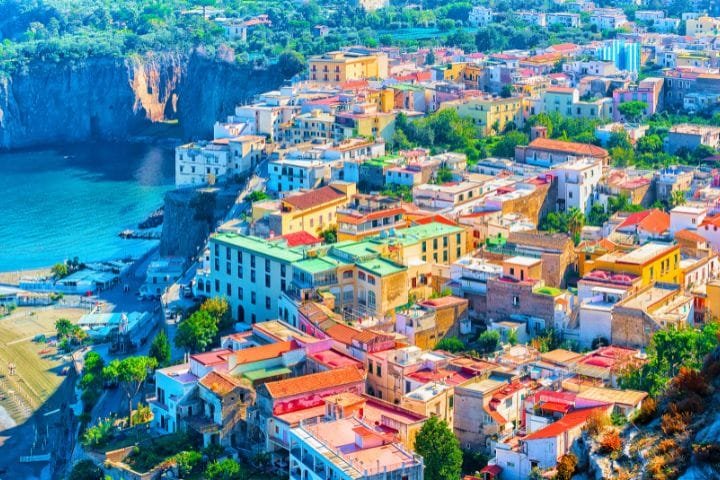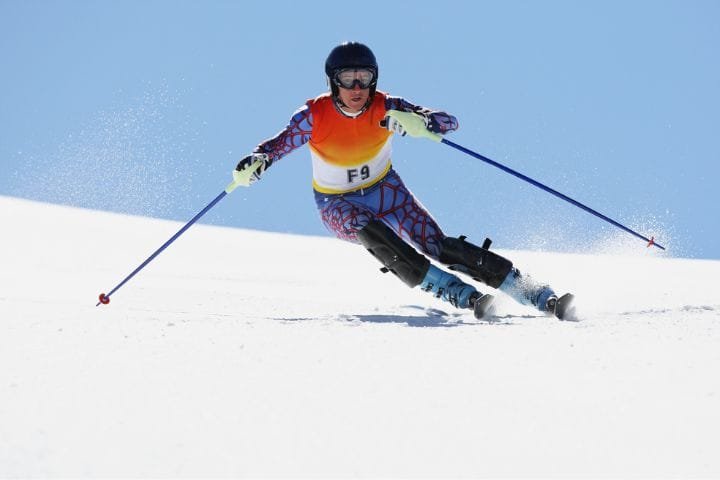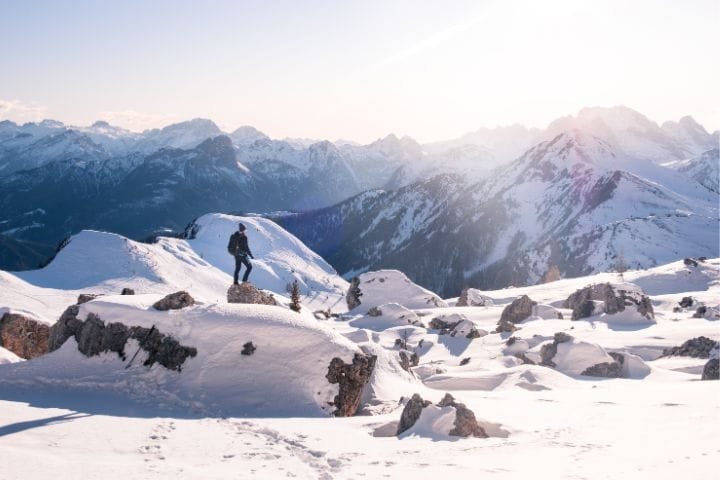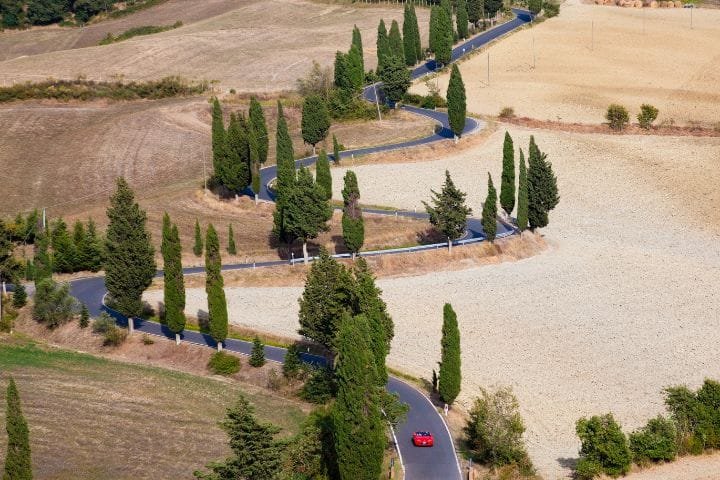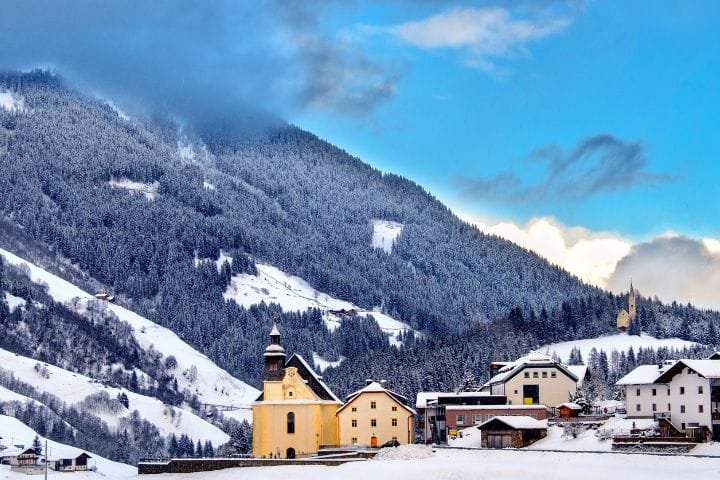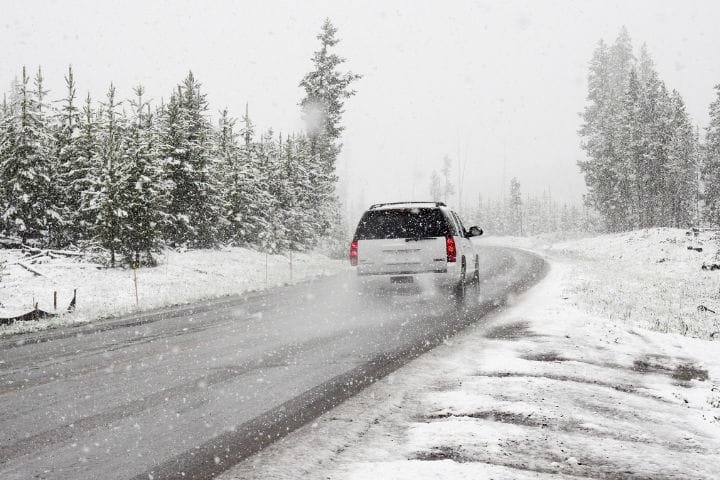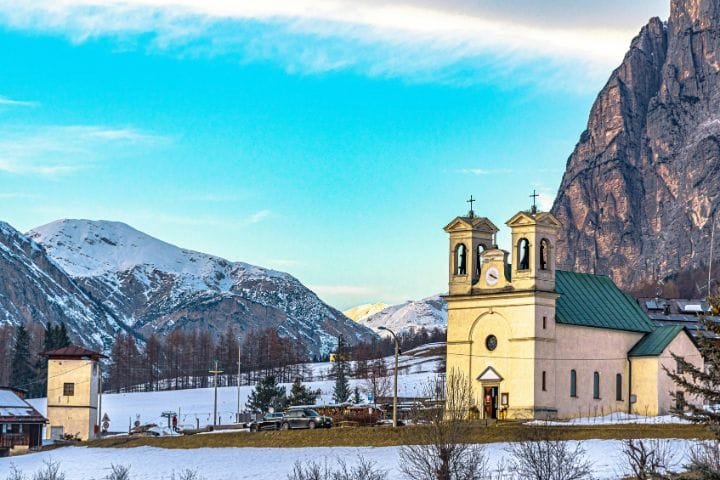Driving in Italy During Summer Heatwave: Essential Tips to Stay Safe

by Asia A. | Last Updated December 17, 2025
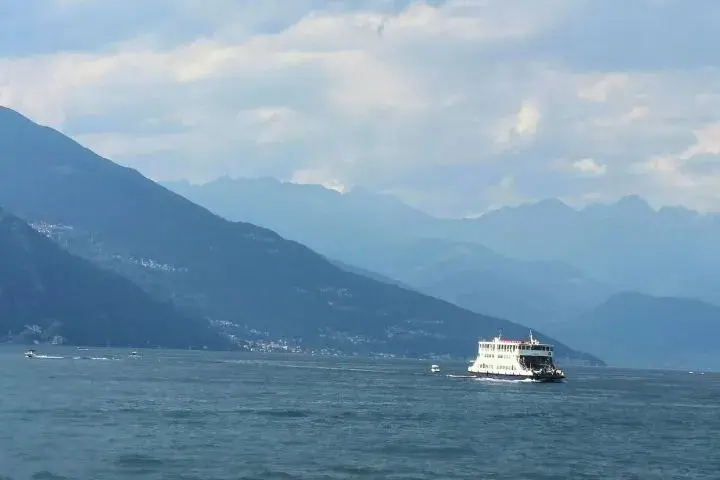
Planning to drive through Italy during the scorching summer months when temperatures soar above 40°C (104°F)? After experiencing multiple Italian summer heatwaves behind the wheel over the past decade.
I can tell you that extreme heat transforms driving from a pleasant sightseeing into a serious safety challenge that requires careful preparation and smart strategies.
Italy’s summer heatwaves have become increasingly intense and frequent; we’re talking about temperatures that regularly hit 42-45°C (107-113°F), and I’ve seen car thermometers reading 48°C (118°F) on the worst days.
Did you know that extreme heat is responsible for more weather-related driving incidents in Italy than rain or snow, yet most tourists are completely unprepared for these conditions?
From the baking asphalt of Rome’s roads to the sun-scorched highways of Sicily, Italian summers test both drivers and vehicles in ways that can quickly become dangerous without proper preparation.
You know what really gets me? Every summer, I watch tourists pile into rental cars with broken air conditioning, no water, and absolutely no idea what they’re getting into. Last August, my husband and I helped a German family whose car overheated on the A1 near Arezzo – the kids were crying, the parents were panicking, and it was 44°C in the shade. That’s when I realized how many people just don’t understand what Italian summer heat can do to you and your vehicle.
Whether you’re planning a romantic Tuscan road trip, exploring the Amalfi Coast, or driving through Sicily’s ancient cities, understanding how extreme heat affects your vehicle, your health, and road conditions is crucial for a safe and enjoyable journey.
Let’s explore how to master driving in Italy during the summer heatwave to stay cool and comfortable, even when the thermometer climbs to dangerous levels.
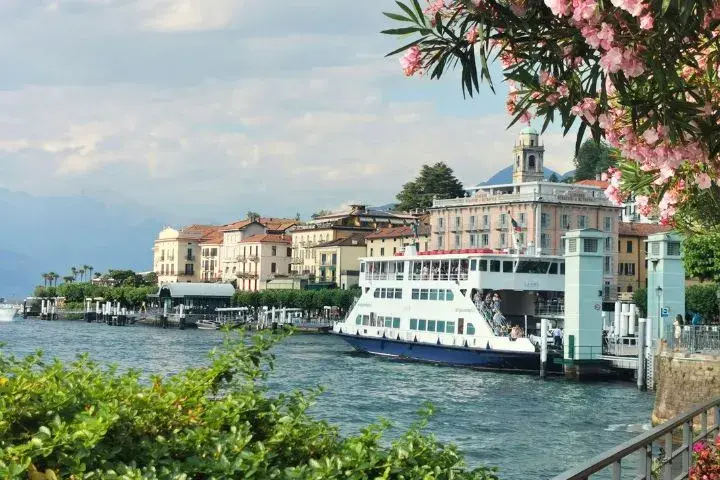
Understanding Italian Summer Heatwave Conditions
Temperature patterns in Italy follow predictable but brutal cycles that every local learns to respect. Our worst heat typically runs from mid-July through mid-August, with the canicola (dog days) being absolutely merciless. In the south – Sicily, Puglia, Calabria – we regularly see 45°C+ (113°F+), while even northern cities like Milano and Torino can hit 40°C (104°F).
Regional variations are dramatic and crucial for planning. The Po Valley around Milano, Verona, and Bologna becomes a furnace because heat gets trapped between the Alps and Apennines. Coastal areas have slightly lower temperatures but crushing humidity that makes everything feel worse. Rome sits in a valley and turns into an oven, while Florence is notorious for its oppressive summer heat.
Peak heat hours run from 11 AM to 6 PM, with the absolute worst conditions usually between 2 and 4 PM. This isn’t tourist guidebook advice – this is survival information. During these hours, asphalt becomes soft, car interiors reach 60°C (140°F), and metal surfaces can literally burn your skin.
Heat index and humidity create dangerous combinations, especially along the coasts. When humidity hits 70-80% with temperatures above 38°C (100°F), your body can’t cool itself properly through sweating. The Adriatic and Tyrrhenian coasts become particularly oppressive during these conditions.
Weather warning systems use a color-coded alert system that locals take seriously:
- Yellow: High temperatures expected
- Orange: Very high temperatures, health risks
- Red: Extreme temperatures, serious health danger for everyone
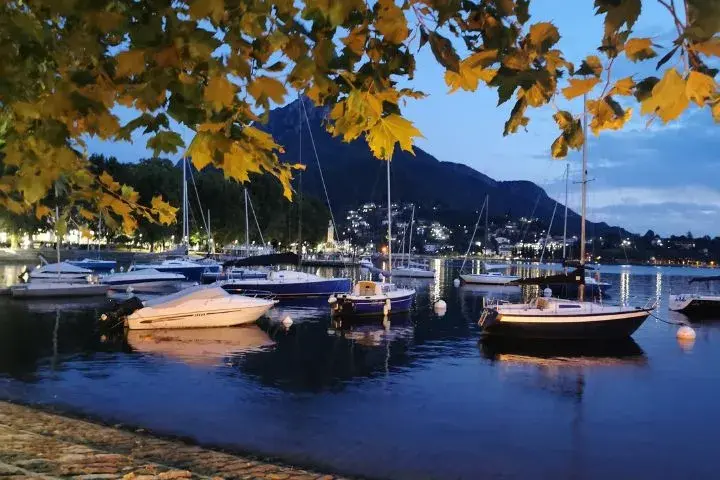
🌡️ What Summer Driving in Italy Really Means
Heatwaves affect roads, traffic flow, and driver concentration across Italy.
- Start with Italy’s complete driving rules, road culture & expectations → Driving in Italy: Complete Guide
- Compare summer risks with cold-weather driving challenges → Winter Driving in Italy: Complete Guide
Vehicle Preparation for Extreme Heat
Air conditioning maintenance isn’t optional – it’s literally life-saving equipment during Italian summers. Get your A/C serviced before June, not when it breaks down in August traffic jams. Check refrigerant levels, clean filters, and test maximum cooling capacity. A weak A/C system that works fine in spring will fail you when you need it most.
I always tell people: if your A/C can’t make the car genuinely cold within 5 minutes, it needs service. During heatwaves, you’re not just seeking comfort – you’re preventing heat exhaustion and potentially saving lives.
Cooling system inspection becomes critical because Italian summers destroy unprepared vehicles. Check coolant levels, inspect hoses for cracks, and test your radiator cap. Engine overheating during traffic jams on hot highways is one of the most common car breakdowns we see every summer.
Tire pressure monitoring saves lives and prevents dangerous blowouts. Hot asphalt and high temperatures can increase tire pressure by 10-15 PSI above normal levels. Under-inflated tires generate more heat and can fail catastrophically on superheated pavement.
Essential heat preparation includes:
- Spare coolant and water for emergencies
- Sunshades for all windows (front, rear, and sides)
- Emergency cooling towels and ice packs
- Extra water – at least 2 liters per person
- Backup phone charger (heat drains batteries faster)

🚗 Preparing Your Car for Italian Summer Temperatures
Overheating is one of the most common summer breakdown causes.
- Understand fuel quality, station availability & cooling considerations → Fuel Prices and Gas Stations in Italy
- Make sure your rental car meets safety standards → Best Car Rental Companies in Italy
Route Planning and Timing Strategies
Avoiding peak heat hours requires completely rethinking your driving schedule. Locals start long trips at dawn (5-6 AM) to reach destinations before the heat becomes dangerous. Afternoon departures are postponed until after 7 PM when temperatures finally start dropping.
For long-distance driving, I plan routes with major rest stops every 90 minutes in air-conditioned locations – autogrill, shopping centers, or hotels. This isn’t just comfort; it’s preventing heat exhaustion that can impair driving ability.
Highway vs scenic routes present different challenges during heat waves. Highways offer faster travel and more service areas, but create heat-trapping traffic jams. Scenic mountain routes provide cooler temperatures but longer travel times and fewer emergency services.
Covered parking strategies require advanced planning because every Italian knows how to seek shade. Shopping centers, underground garages, and covered parking fill up quickly during extreme heat. I always research parking options ahead of time rather than circling in the sun looking for spaces.
Emergency shelter locations should be mapped along your entire route. Know where hospitals, shopping centers, and major hotels are located, as they provide immediate air conditioning if heat-related emergencies develop.
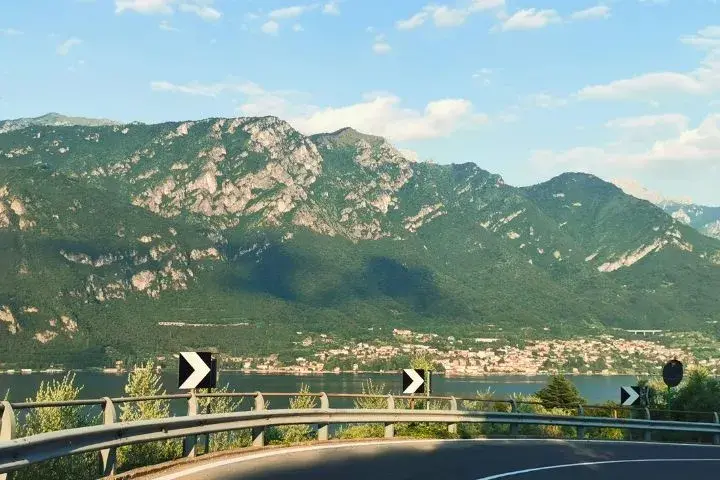
🗺️ Smart Route Planning During Heatwaves
Avoid traffic peaks, overheated city centers, and long midday drives.
- Use apps that factor traffic, closures, and weather → Best Navigation Apps for Italy Road Trips
- Review toll road services and rest areas along highways → Italy Toll Roads & Telepass Explained
Plan Your Trip with Our Favorite Booking Tools
Health and Safety Precautions
Heat exhaustion prevention starts with understanding that it affects everyone, not just older adults or children. Early symptoms include headache, dizziness, nausea, and excessive sweating. In cars without adequate A/C, these symptoms can develop within 30 minutes during extreme heat.
Hydration strategies go beyond just drinking water. During long drives in extreme heat, you need to replenish your electrolytes – consider using sports drinks, oral rehydration salts, or even just water with a pinch of salt. Avoid alcohol and caffeine, which accelerate dehydration.
Protecting vulnerable passengers requires extra vigilance. Children’s body temperature rises 3-5 times faster than adults, while senior passengers may not recognize heat stress symptoms. Never leave anyone in a parked car, even briefly – interior temperatures can reach deadly levels within 10 minutes.
Recognizing dangerous symptoms can save lives:
- Heat exhaustion: Heavy sweating, weakness, nausea, headache
- Heat stroke: High body temperature, confusion, hot/dry skin, rapid pulse
- Severe dehydration: Dark urine, extreme thirst, dizziness
Emergency contacts every driver should have:
- General emergency: 112
- Medical emergency: 118
- Roadside assistance: 116
- Heat emergency info: local hospital numbers
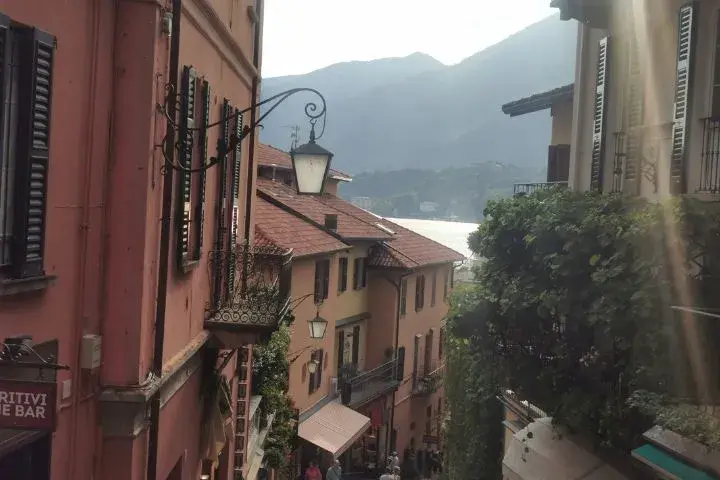
🧴 Staying Healthy While Driving in Extreme Heat
Heat exhaustion is a real risk during long summer drives.
- Refresh Italian road safety rules and emergency expectations → Driving Culture & Road Etiquette in Italy
- Know legal documents and insurance coverage in case of incidents → Car Insurance Requirements in Italy
Driving Techniques for Hot Weather
Reduced speed and increased following distance become essential because extreme heat affects tire grip, braking distance, and engine performance. Hot asphalt changes road surface characteristics, especially on steep grades where temperatures can exceed 60°C (140°F).
Managing overheating engines requires recognizing early warning signs before catastrophic failure. Temperature gauge readings above normal, steam from the hood, or unusual engine sounds demand immediate attention. Pull over safely, turn off the A/C, and turn on the heat to help cool the engine.
Parking strategies can make the difference between a comfortable return to your car and a dangerous situation. Always park in shade when possible, use window shades, and crack windows slightly for ventilation. Orient your car to minimize afternoon sun exposure through windows.
Window and ventilation management follow specific techniques that locals learn. Before entering a superheated car, open all doors for 30 seconds to release trapped hot air. Use A/C recirculation mode only after initial cooling, then switch to fresh air to prevent CO2 buildup.
Night driving advantages include dramatically cooler temperatures, less traffic, and reduced engine strain. Many locals prefer driving long distances at night during summer, leaving around 9-10 PM when temperatures finally become tolerable.
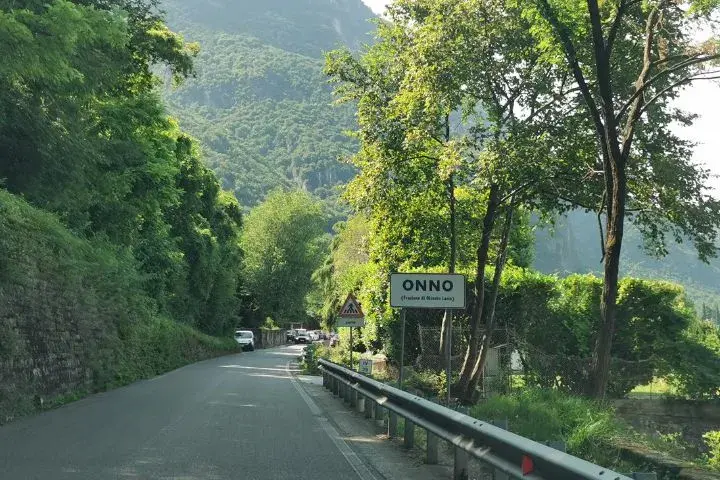
Emergency Procedures and Breakdown Management
Overheating engine response follows specific steps that can prevent engine destruction:
- Pull over immediately when the temperature warning appears
- Turn off the A/C and turn on the heat to maximum
- If steam appears, stop the engine immediately and call for help
- Never remove the radiator cap when the engine is hot
- Wait at least 30 minutes before checking fluid levels
Roadside assistance strategies during extreme heat require special considerations. Stay in whatever shade you can find, use emergency triangles to warn other drivers, and be prepared to wait longer than normal because car breakdowns spike during heat waves.
Emergency cooling techniques can prevent heat stroke while waiting for help:
- Wet clothing with water and sit in the vehicle’s shade
- Use ice packs on the neck, wrists, and temples
- Drink small amounts of water frequently
- Move to air-conditioned locations if available nearby
Safe waiting procedures during hot weather breakdowns include staying hydrated, seeking shade, and avoiding physical exertion. Heat stroke can develop rapidly when you’re already stressed from car problems.
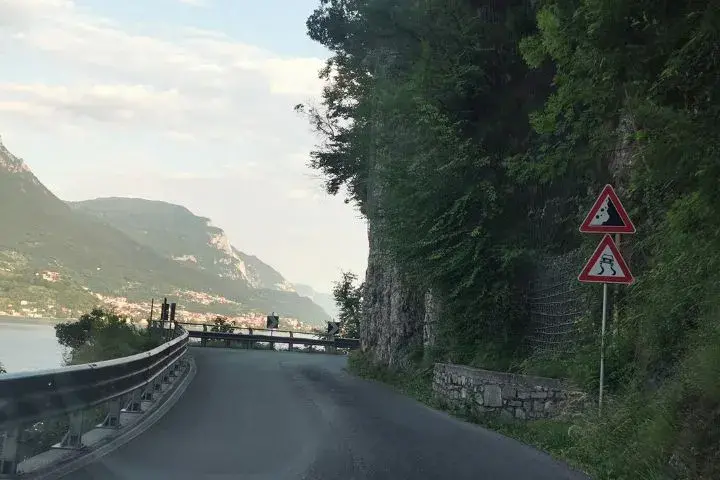
🚦 How to Drive Safely in High Temperatures
Summer heat affects braking distances, tire pressure, and reaction time.
- Review speed limits that apply during extreme weather → Speed Limits in Italy for Tourists
- Recognize warning signs related to hazards and road conditions → Italian Road Signs Explained
Regional Considerations Across Italy
Southern Italy challenges intensify everything about summer driving. Sicily, Puglia, and Calabria regularly experience temperatures that make driving genuinely dangerous during midday hours. Local traffic patterns shift dramatically – you’ll see empty roads at 2 PM and traffic jams at 8 PM.
Coastal vs inland differences affect route planning significantly. Coastal areas have slightly lower temperatures but oppressive humidity, while inland areas like central Tuscany or Umbria can be 5-8°C hotter but with lower humidity.
Mountain escape routes provide crucial cooling opportunities. Even during the worst heatwaves, elevation gains of 500-800 meters can drop temperatures by 5-10°C. Places like the Alban Hills near Rome or the hills around Florence offer relief from the valley heat.
Urban heat island effects make city driving particularly challenging. Rome, Milan, and Naples can be 5-10°C hotter than the surrounding countryside due to concrete and asphalt heat absorption. Plan urban driving for early morning or evening when possible.
Tourist area considerations include understanding that popular destinations become even more crowded as people seek air-conditioned refuges. Coastal towns, shopping areas, and mountain destinations see traffic spikes as locals and tourists escape the heat.
Plan Your Trip with Our Favorite Booking Tools
Practical Cooling Solutions and Equipment
Portable cooling devices that actually work in Italian heat include battery-powered fans, cooling vests, and portable A/C units for extended stops. Avoid cheap gadgets that can’t handle extreme temperatures – invest in quality equipment designed for hot climates.
Window protection systems beyond basic sunshades include reflective windshield covers, side window films, and rear window shades. The goal is to block as much solar radiation as possible from entering your vehicle.
Personal cooling items that locals swear by:
- Cooling towels activated with water
- Insulated water bottles that keep drinks cold for hours
- Electrolyte powder or tablets for hydration
- Instant ice packs for emergency cooling
- Small cooler with ice for drinks and cooling supplies
Technology solutions include smartphone apps for real-time temperature monitoring, weather alerts, and locating nearby air-conditioned facilities. However, remember that extreme heat drains phone batteries faster, so carry backup power sources.
❄️ Gear That Makes Summer Driving Easier
Cooling towels, sunshades, emergency water, and ventilation tips.
- Review must-have road trip gear for Italy → Best Travel Accessories for Italy Road Trip
- Ensure your vehicle choice suits long summer drives → Best Car for an Italy Road Trip
Surviving Italian Summer Heat on the Road
Look, after a lifetime of Italian summers, I can tell you that our heat isn’t just uncomfortable – it becomes genuinely dangerous. Climate change has made our summers hotter and longer than what previous generations experienced. What used to be occasional extreme heat is now standard July and August weather.
The key to safe summer driving here is to respect the heat, just like any other serious driving hazard. You wouldn’t drive in a blizzard without preparation, and you shouldn’t drive in 45°C heat without taking proper precautions.
My biggest advice? Plan your driving around the heat, not despite it. Early morning and evening hours aren’t just more comfortable – they’re often the only safe times for extended driving during the worst heatwaves. And always have backup plans for cooling and hydration.
Most importantly, listen to your body and trust local advice about heat conditions. When Italians say it’s too hot to drive, we’re not being dramatic – we’re sharing survival wisdom learned from generations of living with intense Mediterranean heat.
Stay safe, stay hydrated, and remember that no destination is worth risking heat stroke. The Italian countryside will still be beautiful when the temperature drops!
🏁 Final Tips for Summer Driving Success
Prepared drivers stay calm, hydrated, and legally compliant.
- Full refresher on Italian driving rules & safety → Driving in Italy: Master Guide
- Pair summer awareness with seasonal planning → Best Time for an Italy Road Trip
FAQs on Driving in Italy During a Summer Heatwave
Is it safe to drive in Italy during a summer heatwave?
Yes, but extra precautions are needed. Heatwaves can cause car overheating, driver fatigue, and road surface issues. Plan for early morning or late evening driving when temperatures are lower.
How can I keep my rental car from overheating in the Italian summer?
Check coolant levels, avoid pushing the car too hard on steep mountain roads, and never idle the engine for long in extreme heat. Use air conditioning wisely and park in the shade when possible.
What should I pack for safe summer driving in Italy?
Bring extra water, sunglasses, sunscreen, a sunshade for the windshield, and a portable fan or cooling towel. Keep a phone charger handy for emergencies.
Are there driving restrictions in Italy during heat waves?
Usually, there are no specific bans, but in extreme cases, some regions may limit heavy truck traffic to protect road surfaces or reduce pollution. Always check local news or traffic updates.
How do I handle sudden summer storms or wildfires while driving?
Summer heat in Italy can trigger sudden storms or fires, especially in the south. If conditions become dangerous, pull over safely, avoid affected areas, and monitor emergency alerts.
How should I prepare my vehicle for extreme heat?
Service air conditioning before June – weak A/C that works in spring will fail during heat waves. Check coolant levels, inspect radiator hoses, and monitor tire pressure (heat increases pressure by 10-15 PSI).
Essential equipment: spare coolant, sunshades for all windows, emergency cooling towels, extra water (2 liters per person), and backup phone charger.
What are the signs of heat-related health emergencies while driving?
Heat exhaustion symptoms: heavy sweating, weakness, nausea, headache, dizziness. Heat stroke (life-threatening): high body temperature, confusion, hot/dry skin, rapid pulse.
Children’s temperatures rise 3-5 times faster than adults’. Never leave anyone in a parked car – interior temperatures become lethal within 10 minutes. Emergency number: 118 for medical emergencies.
What should I do if my car overheats during a heatwave in Italy?
Pull over immediately when the temperature warning appears. Turn off the A/C and turn the heat to maximum to help cool the engine. If steam appears, stop the engine and call for help.
Never remove the radiator cap when hot. Wait 30 minutes before checking fluid levels. Stay in shade, drink water frequently, and use emergency triangles to warn other drivers.
Are there regional differences in heat across Italy?
Southern Italy (Sicily, Puglia, Calabria) experiences the most extreme heat. Po Valley (Milano, Bologna) becomes a heat trap between the Alps and the Apennines.
Coastal areas have slightly lower temperatures but crushing humidity. Urban areas like Rome and Milan can be 5-10°C hotter than the countryside. Mountain routes offer 5-10°C cooler temperatures as escape options.
💬 We’d love to hear from you!
Have questions, tips, or personal travel stories to share? Drop them in the comments below — your insights help fellow travelers plan their adventures too.


